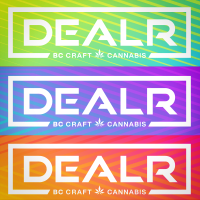
Cannabis sales and other activities related to managing cannabis brought in $1.9 billion for the provincial and federal governments in the year ending March 31, 2023, according to new data from Stats Canada.
This represents a 24.4% increase from the previous year and includes net income from provincial cannabis authorities, excise taxes, retail sales taxes, other specific taxes, as well as licenses and permits.
People in Canada purchased $4.7 billion worth of cannabis from provincial cannabis authorities and other retail outlets, a 15.8% increase ($600 million) from the previous year.
Cannabis sales increased the most in Manitoba (+23.7%), while New Brunswick (-0.4%) reported the most significant decline.
On average, Canadians spent $150 per person of legal age on cannabis in the most recent fiscal year ending March 31, 2023, an increase from $132 per person in the previous year. On average, people in Yukon spent the most at $314 per person, while people in Quebec spent the least at $88 per person.
The amount of dried cannabis the average Canadian purchased in the most recent fiscal year increased slightly from the previous year, from $94 per person to $97, and inhalable extracts increased from $24 to $37 per person.

Inhaled extracts on the rise
While dried cannabis was still the most popular product category, its market share continued to decline as concentrates, especially vapes, gained more shelf space. Sales of dried cannabis declined from 71% market share in 2021-2022 to 64.9% in 2022-2023.
The largest contributor to the increase in overall cannabis sales across Canada was inhaled extracts, which rose by 59% in the 2022 to 2023 fiscal year. This category accounted for 67.6% of the $600 million increase in sales from the previous year, or more than $405 million.
Newfoundland and Labrador, which only began allowing sales of cannabis vape pens in 2022, saw the biggest increase in inhaled extract sales, at 307% increase. PEI saw a 144.7% increase in vape sales. Sales of inhaled extracts in Alberta were 32.5% of total sales, the highest portion in Canada, followed by New Brunswick at almost 31%.
The overall market share of cannabis extracts increased from 18.1% to 24.9% in the 2022-2023 fiscal year compared to the year prior.
Sales in dollars of all cannabis products increased from the previous year except for topicals, seeds, and other cannabis products, which, combined, saw a decline from $52.7 million in 2021-2022 to $21.1 million in 2022-2023.
Sales by all cannabis authorities in Canada were $3.6 billion, with the cost of sales being $2.8 billion for a total of $796.6 million in gross profit.
After subtracting additional expenses and adding other income, the net income of cannabis authorities in Canada was $428.4 million.
Total taxes and other revenue collected on the sale of all recreational cannabis sold in Canada was $1.5 billion. Federal excise and customs duties were $227 million, while provincial and territorial excise tax brought in another $711 million.
The net income of all cannabis authorities, total taxes, and other revenue was $1.9 billion, an increase from $1.5 billion in the previous year.
In comparison, in the most recent fiscal year, the control and sale of alcohol brought in $13.6 billion for the provincial and federal governments. While significantly more than cannabis, this represented just a 0.1% increase from the previous year.













